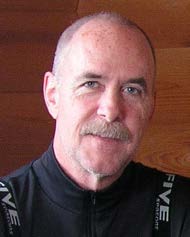From the Editor - December 2015
|
With so much emphasis placed on the development of new technology for finding oil & gas, and rightly so, we sometimes forget that there are some old tools and techniques that still retain their usefulness. The most ancient of all methods for petroleum exploration was first applied by early man, who discovered that a sticky black substance (biodegraded oil, or pitch) found in certain places at the Earth’s surface, was an effective sealant/caulking material. |
During my expatriate assignment for Amoco Venezuela in the 1990’s, some of my most memorable experiences were the various excursions I took into the Orinoco Delta, where we understood that the Government was planning to offer two large blocks in the First (and turned out to be the last) Exploration Bid Round scheduled for 1996-97. The delta of the Orinoco River is roughly the same size as Switzerland, but to this day still hasn’t a single road or other sort of modern infrastructure within the delta proper. By the 90’s, neither had any modern seismic been acquired in the interior of the delta, or oil & gas exploration wells drilled, despite the existence of two significant oil fields on the northern (Pedernales Field) and western (Tucupita Field) delta fringe. Nevertheless, we perceived there was a significant risk that the outer portion of the delta, where one of the blocks had been defined, might be gas-prone — this part of the delta being near to the gas discoveries and producing fields of the Columbus Basin offshore eastern Trinidad. And in those years (and probably to this day), a gas discovery in the remote Orinoco Delta would have been deemed non-commercial.
The main inhabitants of the Orinoco Delta are the people of the Guarao indigenous group, thought to have settled in this region thousands of years ago. The delta is not the most easily habitable part of eastern Venezuela, and it’s believed that the Guarao were originally driven into the delta seeking refuge from more belligerent tribes in the region. There is essentially no dry ground, so the Guarao communities are built on stilts along the banks of the distributary channels. And only a single type of fruit or vegetable, ocumo chino, or dasheen, can be cultivated in the perpetually soggy ground. As such, the limited diet of the Guarao consists of basically just two foodstuffs: the potato-like dasheen, and fish. The critical importance of the latter as their only significant source of protein means that the Guarao’s fishing technology is paramount to their survival. And an essential material for that technology is pitch from oil seeps, both to seal the ends of sections of bamboo that are used as floats/bobbers set out in the channels with line and hooks on which fish bait is attached, as well as caulk for their main transportation, dugout canoes made from mangrove trees. The Guarao name for pitch is oray. Thus, my primary strategy to search for oil seeps was to travel by boat from one village to another, and inquire if anyone in the community knew of any places nearby where oray could be collected. If they claimed to know of such localities, usually a group of men would immediately offer to guide me to the site, which typically would be a subaqueous spot in the mangrove jungle where they dove underwater and excavated in the mud with their hands and feet, emerging, amazingly, with nodules of pitch. How those hidden seeps might have first been encountered is still a great mystery to me.
I visited the environs of the exploration block in the outer delta, called Punta Pescador, on a few of my excursions. I was armed with a treasure map of sorts, a copy of an old report from a couple of geological expeditions in the 1920’s that hadbeen passed to me by a friend in Caracas, in which a number of oil seeps/pitch localities were documented in the area. The localities were marked on a series of roughly sketched maps, and using these in conjunction with my usual inquiries at the Guarao communities, I searched and searched for probably a total of three weeks, to no avail. Finally, during early December 1996, just before the bid deadline for Punta Pescador and the other nine blocks in the First Round, we were traversing a small channel where we’d been before, and lo and behold found a ~50 meter stretch of the channel with oil bubbling to the surface in a number of places and spreading out in a sheen. Samples were taken and hot-shotted back to Houston for analysis, which confirmed not only that it was indeed crude oil, but also revealed the chemical composition which correlated to oil produced at the Pedernales Field far to the west. Amoco management ended up deciding to place a significant bid (something in the neighborhood of USD 100 million, as I recall—a huge bid in those days) on the Punta Pescador block, and won. I don’t believe that any bid would have been made by Amoco unless that oil seep had been confirmed.
Later, 3D seismic was acquired in the Punta Pescador block by Amoco, and a wildcat was drilled in another part of the block than the oil seep. Though the well did not reach its ultimate objective, apparently only gas was encountered, and the license was dropped. But I still recall seeing and sampling that oil seep, and the ensuing excitement and impact it created.
You might have been hoping that I’d disclose the location of the seep in Punta Pescador. Well I’m sorry… that information is just too powerful. :)

